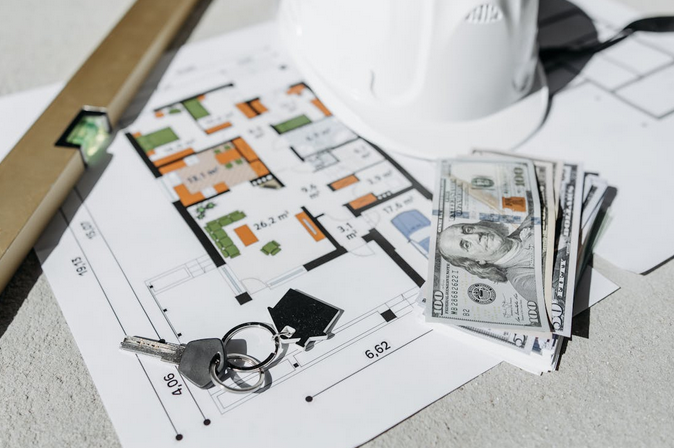Understanding Construction Loans: Tips for Homeowners

Embarking on a construction project to build your dream home is an exciting journey. However, it can also be a complex financial endeavor. One of the most crucial aspects of this process is securing the right financing, and construction loans play a pivotal role in making your vision a reality. Learn about cost-effective building trends at www.aachener-zeitung.de. Understanding how construction loans work and ways to navigate the application can save you time, money, and stress. Here are some essential tips for homeowners considering construction loans.
Understanding Construction Loans

A construction loan is like a soft loan used to finance the construction of a home or another real estate project. Unlike traditional mortgages, which disburse the full loan amount at once, construction loans provide funds in stages as the project progresses. These stages, or “draws,” correspond to specific phases of construction, such as foundation work, framing, and finishing. Construction loans typically cover the cost of land, labor, materials, and permits, with the loan term usually lasting between six months and two years.
Types of Construction Loans
There are varying types of construction loans, each catering to different needs and situations. The most common types include construction-to-permanent loans, stand-alone construction loans, and renovation construction loans. Construction-to-permanent loans initially fund the construction of the home and then convert it into a permanent mortgage once construction is complete. This type of loan offers the convenience of a single closing process and fixed interest rates. Stand-alone construction loans, on the other hand, cover only the construction phase.
Once the home is built, the borrower must safeguard a separate mortgage to pay off the construction loan. This type can be beneficial if you find a permanent loan with better terms later, but it involves two separate loan applications and closing processes. Renovation construction loans are specifically designed for homeowners looking to renovate or expand their existing homes. These loans fund extensive remodels and improvements, operating similarly to other construction loans, with funds disbursed in stages as the work progresses.
Qualification Requirements
A construction loan may need more severe qualifications than a standard mortgage. Lenders take your creditworthiness, income stability, and financial health seriously. A decent credit score is necessary, with most lenders demanding at least 620. However, higher scores increase your chances of acceptance and better conditions. Construction loans often need a larger down payment than standard mortgages, ranging between 20% and 30% of the entire project cost. This demonstrates your commitment and reduces the lender’s risk.
Lenders also require comprehensive construction plans, including blueprints, a timeline, and a detailed budget. These documents ensure that the project is well-planned and feasible. Your lender will also need to approve your chosen builder and review the builder’s credentials, experience, and financial stability to guarantee they can complete the project satisfactorily.
Interest Rates and Payments

Construction loans generally have variable interest rates that fluctuate with the prime rate or other market indices. During the building period, you normally pay interest only on the sums disbursed. Once the construction is complete and, if you have a construction-to-permanent loan, the loan converts to a permanent mortgage, your payments will include both principal and interest.
Draw Schedule and Inspections
Funds from a construction loan are released according to a draw schedule that aligns with specific milestones in the construction process. After each phase of construction, an inspection is conducted to verify that the work is complete and up to code before the next disbursement. It’s important to plan for these inspections and ensure your builder stays on schedule to avoid delays in funding.
Several Potential Challenges
Building a home is a complex process that can encounter unexpected challenges, such as cost overruns, weather delays, and material shortages. To manage these risks, it’s advisable to include contingency funds, allocating 10% to 15% of your total budget for unforeseen expenses. Maintaining open communication is also crucial. Communicate regularly with your builder, lender, and any other stakeholders to stay informed about the project’s progress and address issues promptly. Additionally, monitor expenses closely to ensure the project stays within budget. Make adjustments as needed and avoid making significant changes that could escalate costs.
Securing a construction loan requires careful planning, thorough preparation, and a clear understanding of the loan process. By familiarizing yourself with the types of construction loans, qualification requirements, and potential challenges, you can make logical choices that align with your financial goals and project needs.



